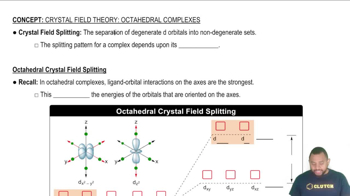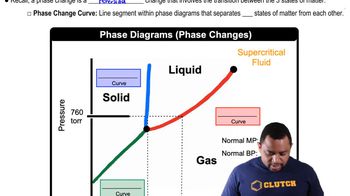Here are the essential concepts you must grasp in order to answer the question correctly.
Liquid Crystals
Liquid crystals are states of matter that have properties between those of conventional liquids and solid crystals. They can flow like a liquid but have some degree of order, particularly in their molecular arrangement. This unique phase allows them to exhibit anisotropic properties, meaning their optical and physical properties can vary based on direction.
Recommended video:
The crystal field splitting pattern for octahedral complexes has the d orbitals on or along the axes as having the higher energy.
Phase Transition
A phase transition is the transformation of a substance from one state of matter to another, such as from solid to liquid or liquid to gas. For liquid crystals, these transitions occur at specific temperatures and pressures, where the molecular arrangement changes, leading to distinct phases like nematic or smectic. Understanding these transitions is crucial for determining the conditions under which liquid crystals exhibit their unique properties.
Recommended video:
Phase Changes in Diagrams
Thermodynamic Stability
Thermodynamic stability refers to the conditions under which a substance maintains its phase without spontaneous change. For liquid crystals, this stability is influenced by temperature and pressure, which dictate the phase they occupy. At well-defined temperatures and pressures, liquid crystals can exist in a stable state, making it essential to understand these parameters when evaluating their behavior.
Recommended video:
First Law of Thermodynamics




